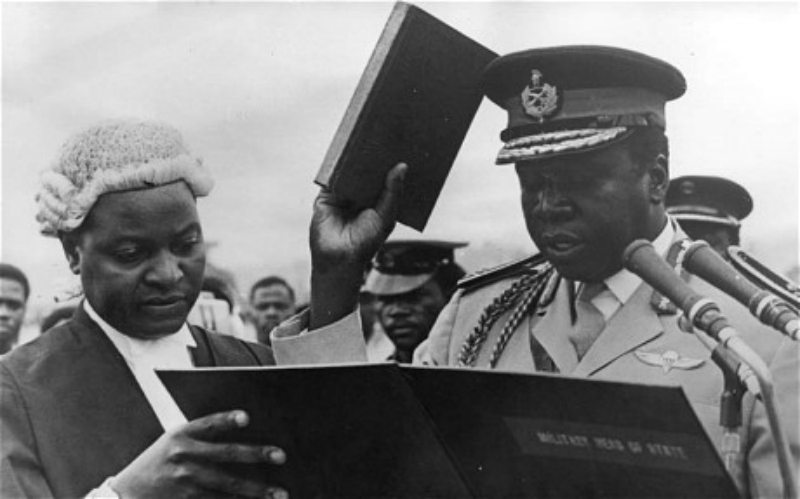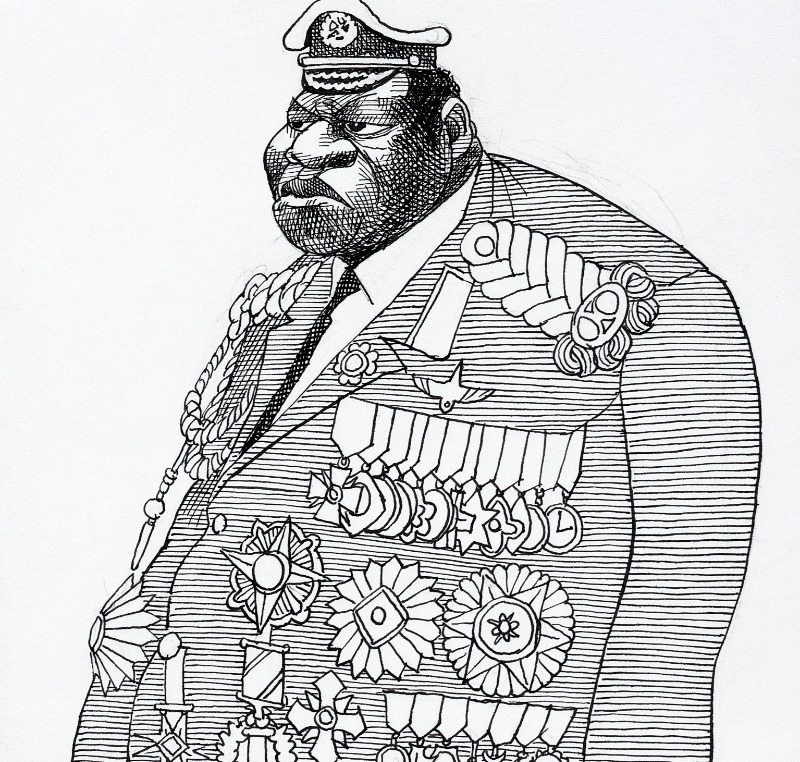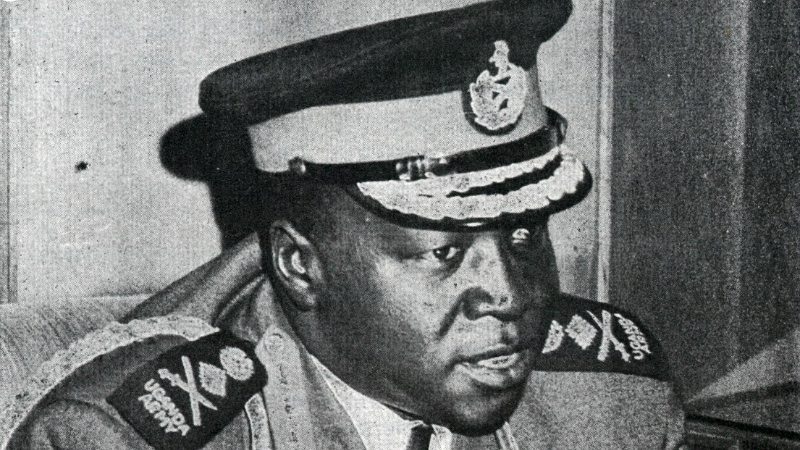Idi Amin
Episode #9 of the course Deadliest dictators in history
Idi Amin Dada (1923?–2003) ruled Uganda during the 20th century, but he caused a legacy of destruction that continues today. After overthrowing the first prime minister and making himself executive president, Amin ordered an ethnic cleansing that killed nearly 500,000 people out of a population of about 12 million. His actions killed at least another 500,000 through disease, famine, and lingering effects. In eight years, Idi Amin drove Uganda toward ruin until he was overthrown and driven into exile.
Born a member of the Kawka ethnic group in central Uganda, accounts vary about the details of his birth, including its exact date. Not much is known about his youth, but he was probably raised in the Islamic faith and attended an Islamic school. Amin was named for his father, who seems to have been absent from his childhood. His mother may have been an herbalist who attended Bugandan royalty.

Idi Amin takes the oath of office in 1971 in Kampala.
Credit: Getty Images.
Amin joined the British Army in 1946 as a cook and rose through the ranks. He fought for the British in Somalia and Kenya during the 1950s. From 1951 to 1960, Amin also held Uganda’s light heavyweight boxing champ title.
Uganda gained its independence from British colonialism in 1964. Amin’s friend and confidante, Milton Obote, was named the country’s first prime minister. Amin was named commander of the armed forces in 1966. Obote and Amin worked together at first to establish a new Uganda free of colonial rule.
Obote declared himself executive president in 1966 and sent Amin to dethrone the king of Buganda. Distrust grew between Amin and Obote, and in 1971, Amin staged a coup that overthrew Obote and exiled him to Tanzania.

Idi Amin visits the Zairian dictator Mobutu during the Shaba I conflict in 1977.
Credit: http://usacac.army.mil/cac2/cgsc/carl/download/csipubs/odomshaba2.pdf
Amin named himself president and immediately ordered the persecution of the Acholi people, who had been loyal to Obote. He expelled all Pakistani and Indian citizens, which brought on quick economic decline and caused a rippling effect through international markets. Amin also rejected numerous peacekeeping efforts and offers of international assistance.
As portrayed in the film The Last King of Scotland (2006), Amin may have been a complicated man. Erratic and uncontrollable, he made purposefully inflammatory remarks about international figures, especially England’s Queen Elizabeth. He made wild claims and drew constant attention, including his offer to lead Scotland in a great revolution and become the King of Scotland. Meanwhile, Acholi people were imprisoned and executed, and thousands of other Ugandans were starving and impoverished.

Idi Amin caricature
Credit: http://loc.gov/pictures/resource/ppmsc.07954/
In 1979, Amin attempted to invade Tanzania but failed. Tanzania retaliated, and Amin was forced into exile. He fled first to Libya, then to Saudi Arabia, with his four wives and 30 children. He died in Saudi Arabia in 2003.
After Amin was removed from Uganda, the Acholi people who remained loyal to former Prime Minister Obote performed a retaliatory “cleansing” on the people of Amin’s ethnicity—the Kawka people. Obote used mostly Acholi people in his National Resistance Army in the 1980s, leading to further brutal killings based on ethnicity.
Recommended book
Share with friends

